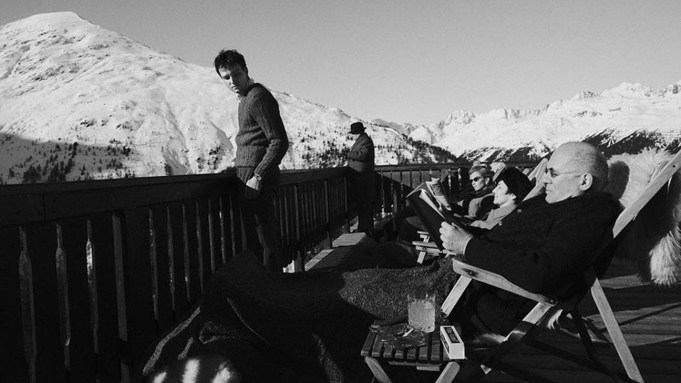In Timm Kröger’s visually captivating sophomore film, “The Theory of Everything,” audiences are transported to the mountainous Grisons canton of Switzerland in 1962, during the peak of the Cold War. This atmospheric metaphysical thriller, reminiscent of Alfred Hitchcock‘s signature suspense, weaves a tale of love, death, and mysterious doppelgängers against a backdrop of jagged mountains, snowy landscapes, and a physics congress filled with enigmatic characters.
At the heart of the story is Johannes (Jan Bülow), a young physicist with unconventional theories about multiverses. He finds himself at odds with his stern supervisor, Dr. Strathen (Hanns Zischler), who dismisses Johannes’ speculative ideas. The congress they attend keeps getting delayed due to the absence of its keynote speaker, adding an element of intrigue to the proceedings.
READ MORE: Poor Things – Emma Stone’s Oscar-Worthy Return
Johannes’ path crosses with Professor Blumberg (Gottfried Breitfuss), a jovial and eccentric scientist, and Karin (Olivia Ross), an enigmatic Frenchwoman with an uncanny connection to Johannes. The film artfully explores themes of déjà vu, doubling, and obsessive love, reminiscent of Hitchcock’s classic “Vertigo.”
As the narrative unfolds, strange occurrences in the nearby mountains, including pulsating lights and mysterious figures, become central to the story. Johannes finds himself entangled in a web of mysteries, with Blumberg’s inexplicable reappearance after his apparent death adding to the intrigue.
While the central speculative sci-fi aspect of multiverse theory may seem complex, it aligns with contemporary themes seen in superhero blockbusters, making it accessible to audiences. However, the film’s primary focus appears to be the rich visual storytelling rather than an intricate narrative. Kröger and DP Roland Stuprich draw inspiration from a range of cinematic influences, including Hitchcock, ’80s TV aesthetics, and the French New Wave.
“The Theory of Everything” thrives on its immersive atmosphere, bringing to life the paranoia of the nuclear age and the fear of existing in the wrong universe. References to early-’60s psychedelia and the hidden pasts of the older physicists contribute to the film’s sense of intrigue and existential unease.
While the plot could have delved deeper into the metaphysical aspects, Kröger’s meticulous attention to detail and his ability to transport viewers to a different dimension through visuals make “The Theory of Everything” an engrossing cinematic experience. It’s a tribute to the master of suspense himself, Alfred Hitchcock, and a mind-bending journey through the complexities of parallel universes.
